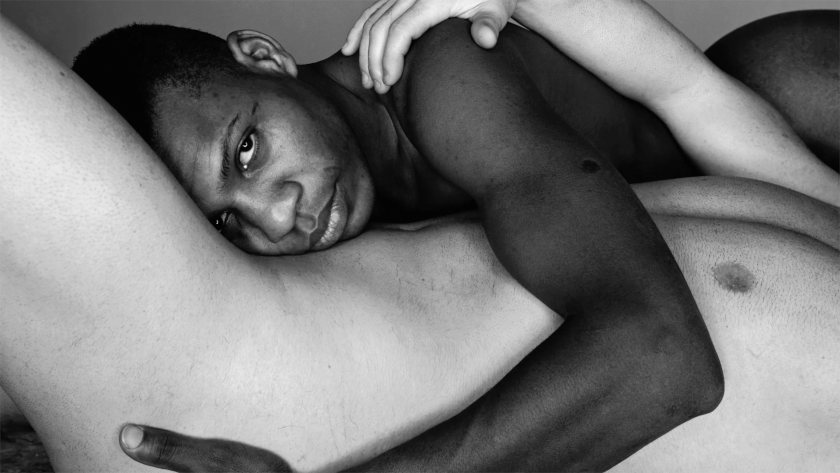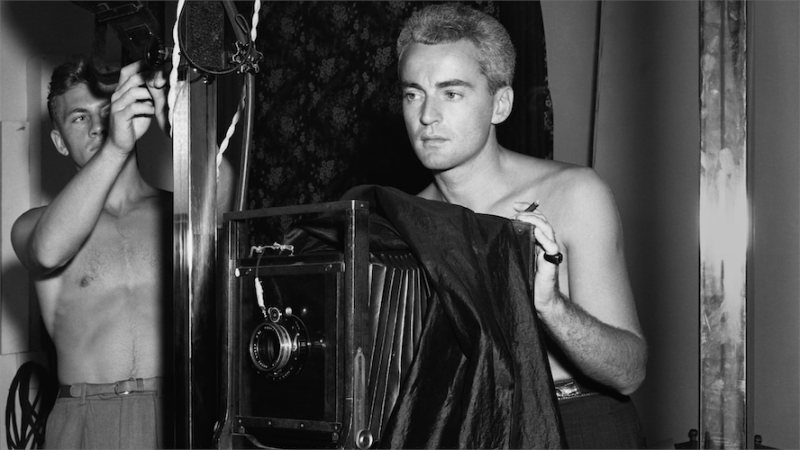Vassilis Kroustallis reviews the documentary on forgotten LGBTQ+ photographer George Platt Lynes.
Sam Shahid does an intriguing and well-researched job unveiling the life and work of New Jersey gay fashion photographer George Platt Lynes (1907-1955). In his 'Hidden Master: The Legacy of George Platt Lyons' doc, he presents the life and art of the artist as a unison of two trajectories. The only difference is while his life as a gay man was completely transparent, his art (and his male nudes, of which he was appropriately proud) had to remain in the closet.
Lynes died relatively young to experience Stonewall and the sexual revolution of the 1960s decade. Yet the documentary of Sam Shahid always presents him as an uninhibited, sexually liberated, eager-to-know (and sometimes eager to dominate) spirit. As an 18-year-old, he goes to Paris, and meets Gertrude Stein and her circle; artistically minded (but not of the literate variety), he returns to the US to open a bookstore. Yet, his individual talent seems to lie in photography; completely self-taught, he experiments with his friends' portraits. On another trip to Paris, he meets Jean Cocteau et al. Not fit for University life (he dropped Yale after a year), he opened his own New York studio in 1932. He also starts to live openly with curator Monroe Wheeler and his writer partner Glenway Wescott -described in the film as the happiest instance of what a romantic and erotic threesome would be like.
Being a privileged gay white man, he had little difficulty in connecting with the New York gay circle of the 30s -and got his first commercial assignments as a fashion photographer (Harper's Bazaar, Vogue). Yet what the film implies is that his value as an artist lay in two things: (a) the appreciation of the male human body as an erotic object, to which every attention needs to be drawn (lighting, sets, posture, models' choice) and (b) his communication skills to persuade (only the very beautiful) though young men to take their clothes off -even if those photographs are to stay in private.
We still feel the way of a closeted life in Shahid's doc, with most experts and Lyne's erstwhile lovers (like Bernard Perlin) insisting on one thing: that the male nude photographs were the pinnacle of Lynes' career both in terms of artistic significance and personal fulfillment. Lynes seems to have broken many barriers: interracial sex, and depiction of explicit sexual acts between men; yet what his practice and work justifies is this "gentleness of sexuality", as one of the interviewees describes. With the commercial motive completely absent, his works never veered into the pornographic. This doesn't make Lynes an erotic angel of the flesh -he is candid and straightforward in what he photographs, and sometimes he's not afraid to use the same props from his commercial work in his nude photos (if he were an aesthete, he were of the practical, recycled variety).
His valuable friendship with Albert Kinsey (who used many of Lynes' photographs for his purposes) resulted in the Kinsey Institute hosting a treasure of the Lynes' archive. Yet, Shahid's documentary has the feel of a film in the making; even after we think we know everything about George Platt Lynes, the film moves into its third act to open a new chapter and a new collection by Fred Koch (we are told that the collector collected, but never looked at the material) still unutilized and still -in its most part - unseen.

The documentary is an energizing portrait of a mostly forgotten LGBTQ+ artist; you still feel the need for more discussion into Lynes' aesthetic choices and his sense of belonging in the art world would be needed here (for instance, Lynes' low view of Richard Avedon is fascinating). 'Hidden Master: The Legacy of George Platt Lynes' does a fine job highlighting a person and work that still remains on the artistic sidelines. To be watched widely.
Vassilis Kroustallis
'Hidden Master: The Legacy of George Platt Lynes' screened at the 2024 Thessaloniki Documentary Film Festival.

